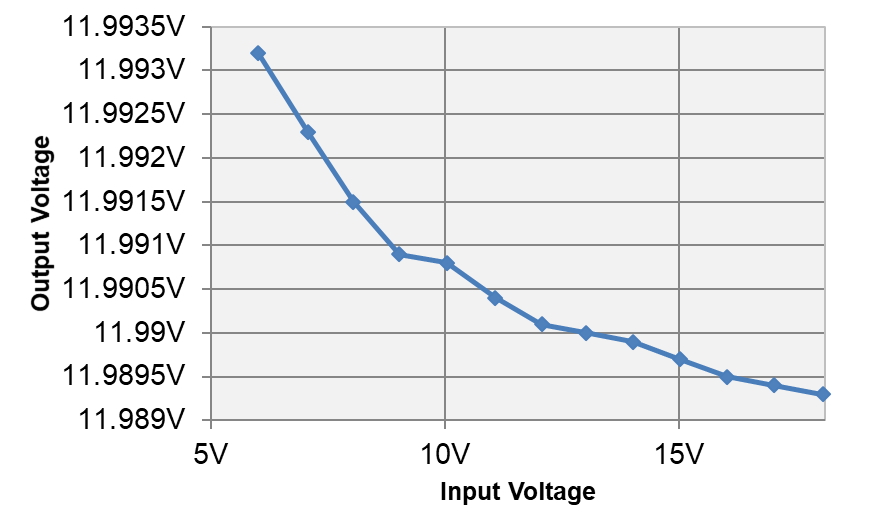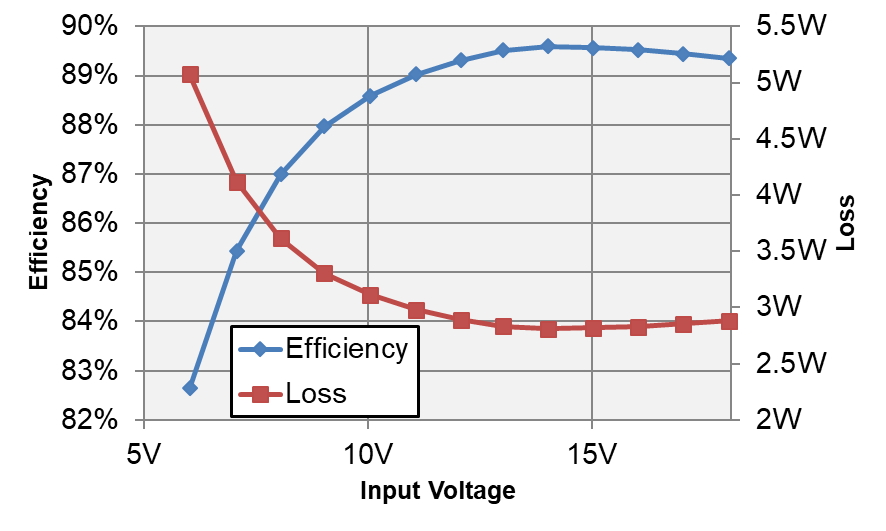TIDT286 June 2022
2.4 Line Regulation
The graph in Figure 2-4 shows the result for 2-A output current. Figure 2-5 shows the influence of the input voltage on efficiency and loss.
 Figure 2-4 Output Voltage vs Input Voltage
Figure 2-4 Output Voltage vs Input Voltage Figure 2-5 Efficiency and Loss vs Input Voltage
Figure 2-5 Efficiency and Loss vs Input Voltage